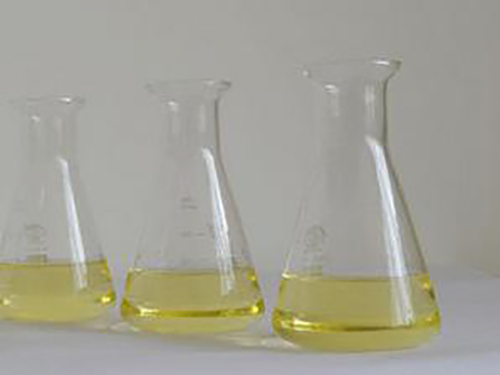Effective Use of Flocculants in Water Treatment Processes for Enhanced Clarity and Purity
The Role of Flocculants in Water Treatment
Water is an essential resource for life on Earth, and its purity is crucial for both environmental sustainability and human health. As global populations grow and industrial activities expand, the demand for effective water treatment solutions has never been greater. Among these solutions, flocculants play a pivotal role in enhancing water quality by promoting the aggregation of suspended particles, thereby facilitating their removal. This article explores the significance of flocculants in water treatment, their mechanisms of action, types, applications, and benefits.
Understanding Flocculants
Flocculants are substances that are added to water to assist in the clumping together of small particles, which typically include dirt, sediments, and microorganisms. This process, known as flocculation, is a key step in various water treatment methods, particularly in the treatment of wastewater, drinking water, and industrial wastewater. By promoting the formation of larger aggregates, or flocs, flocculants make it easier to remove these impurities from water through settling or filtration.
Mechanisms of Action
The effectiveness of flocculants hinges on their ability to neutralize the charges of suspended particles in water, which often hold the particles in a stable colloidal state. This stabilization prevents particles from settling naturally. Flocculants typically carry a positive charge that attracts negatively charged particles, allowing for aggregation. Once these particles cluster together, they form larger flocs that can then be removed from the water through sedimentation or filtration processes.
Flocculation can occur naturally over time; however, the addition of flocculants significantly accelerates this process, making it more efficient. Factors such as pH levels, temperature, and the nature of the water can influence the efficiency of flocculants, necessitating careful selection and application for optimal results.
Types of Flocculants
Flocculants can be broadly classified into three categories organic, inorganic, and synthetic.
1. Organic Flocculants These are typically derived from natural sources, such as plant or animal materials. Examples include starches, guar gum, and gelatin. Organic flocculants are biodegradable and often preferred for environmentally sensitive applications.
2. Inorganic Flocculants Commonly used inorganic flocculants include aluminum sulfate (alum) and ferric chloride. These substances are known for their effectiveness and relatively low cost, making them widely used in municipal water treatment facilities.
3. Synthetic Flocculants These are chemically manufactured polymers designed to enhance flocculation efficiency. Synthetic flocculants can be engineered for specific properties, such as charge density and molecular weight, allowing for optimized performance in a variety of conditions.
Applications in Water Treatment
flocculant water treatment

Flocculants are extensively used in several contexts, including
- Drinking Water Treatment In municipal water treatment facilities, flocculants assist in the rapid removal of particles, ensuring the safety and quality of drinking water for communities
.- Wastewater Treatment Industrial and municipal wastewater treatment plants utilize flocculants to manage sludge, remove heavy metals, and enhance the overall quality of discharged water.
- Mining and Mineral Processing Flocculants are essential in the mining industry for the clarification of water and separation of valuable minerals from waste materials.
Benefits of Using Flocculants
The use of flocculants in water treatment offers numerous advantages, including
- Improved Water Clarity Flocculants effectively remove particulates, resulting in clearer water that is free from unwanted sediments and contaminants.
- Cost Efficiency By enhancing the efficiency of sedimentation and filtration processes, flocculants can reduce operational costs associated with water treatment.
- Reduced Environmental Impact Many flocculants, especially organic ones, are environmentally friendly and reduce the long-term impact of chemical residues in treated water.
- Versatility Flocculants can be tailored to suit specific water treatment challenges, making them a practical choice for diverse applications across various industries.
Conclusion
Flocculants are indispensable in the modern landscape of water treatment. Their ability to enhance the efficiency of particle removal not only plays a critical role in producing safe drinking water but also aids in managing wastewater effectively. As the need for sustainable water solutions continues to grow, the development and application of innovative flocculants will be key to maintaining water quality and protecting public health. As we progress into the future, adopting effective water treatment practices will be vital for the sustainable management of this precious resource.
-
Pbtc Scale InhibitorPBTC: A Scale Protector for Industrial Water TreatmentNewsAug.05,2025
-
Organic Phosphonate: An Efficient Defender in the Field of Scale InhibitionNewsAug.05,2025
-
Hydrolyzed Polymaleic Anhydride: Green Pioneer in Scale Inhibition FieldNewsAug.05,2025
-
PAPEMP Polyamino Polyether Methylene Phosphonic Acid For SaleNewsAug.05,2025
-
Flocculant Water Treatment: A Pioneer in Purification in the Field of Water TreatmentNewsAug.05,2025
-
Benzyl Isothiazolinone: An Efficient and Broad-Spectrum Antibacterial Protective GuardNewsAug.05,2025





